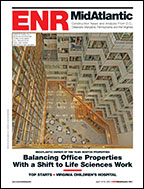The tribal Tahltan Central Council held up Red Chris operations, pending a third-party review of the tailings pond. Engineer Klohn Crippen Berger's study found "a major design issue" in the foundation soils and lack of detailed documentation, emergency response plans and environmental testing. KCB made 22 recommendations for improvement.
The Red Chris tailings pond is designed for 300.7 million tons, more than treble the 99 million tons in Mount Polley's tailings pond in July 2014, according to the company.
Imperial Metals "has provided a commitment" to government ministries and the Tahltan council "to review, respond and implement, as required, the recommendations" of the Klohn report on Red Chris, says David Haslam, MEM spokesman. The ministry is not eliminating use of tailings ponds, even those still in the environmental assessment stage.
Mining companies are "being asked" to "provide a summary report by a qualified professional" on how they considered the panel's recommendations and describe any changes made and "commitments for follow-up work," he says.
However, the Independent Review Panel investigating the Mount Polley failure said, "Improving technology to ensure against failures requires eliminating water both on and in the tailings: water on the surface, and water contained in the interparticle voids. Only this can provide the kind of fail-safe redundancy that prevents releases no matter what."
The panel also predicted that, without changes, there will be two tailings-pond failures every 10 years, based on past performance. It "firmly rejects any notion that business as usual can continue."
The Ministry of Environment, with a $10- million budget increase this year, will add staff to step up inspections, but Haslam couldn't say how many new inspectors will be hired. The ministry is asking mines to report, by June 30, if their tailings-pond foundation design is similar to Mount Polley's and if it has been properly checked for stability.
Haslam expects that only 10 of the 30 mines now in the environmental assessment and permit process "will actually proceed" in coming years.
The province also is requiring operating mines with tailings ponds to set up independent review boards. Several mines already have these boards in place, says a MEM spokesman.
The recommended dry storage would prevent water from mixing with tailings, especially when trying to protect against acid mine drainage, which is "common in mining … ubiquitous in mining copper," says David Chambers, mining engineer and president of the Center for Science in Public Participation, Bozeman, Mont.





Post a comment to this article
Report Abusive Comment